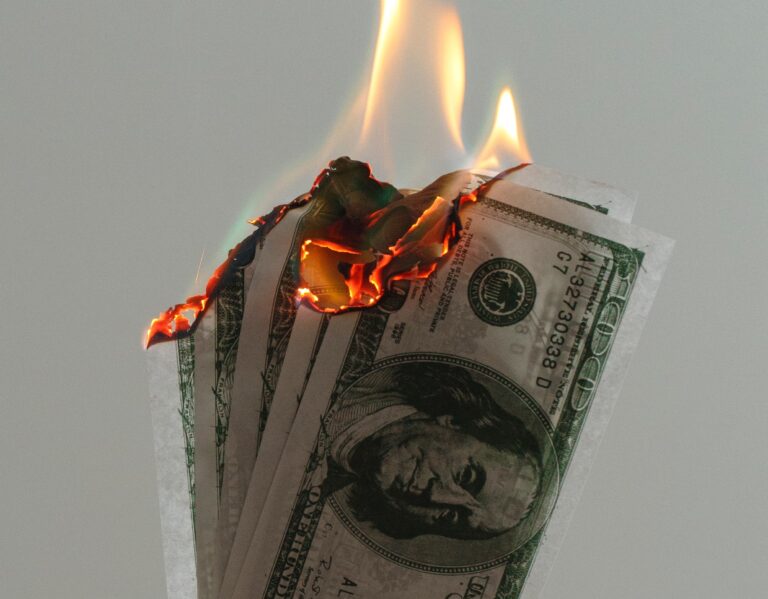Inflation reflects the accelerating pace at which goods and services get pricier. When it takes root, everyday essentials like food become costlier, sending ripples through an economy. From basic needs like housing and medical care to luxury items like jewelry, no sector remains untouched. As prices spiral, the dread of future inflation weighs heavily on both consumers and businesses.
Prestigious institutions, like the U.S. Federal Reserve, vigilantly track and regulate inflation, targeting around a 2% rise. Why? Because unchecked inflation diminishes the worth of today’s savings tomorrow, undermining purchasing power and future financial plans. This piece delves into inflation’s intricacies, its various forms, and its broader impact.
Table of Contents
What drives inflation
Inflation, the upward climb of prices, is a result of varied triggers in the economy. Let’s delve into its principal drivers.
1. Cost-push inflation: Prices inflate when production costs swell. Factors:
- Raw materials and wages: A rise in raw material costs, like metals or oil, pushes companies to charge more. Similarly, higher wages, especially during times of low unemployment, prompt businesses to raise prices;
- Natural disasters: Disasters can wreck essential crops like corn, amplifying costs throughout the economic food chain.
2. Demand-pull inflation: Driven by heightened consumer demand, several elements fuel this:
- Economic activity: A thriving economy with low unemployment and rising wages propels spending;
- Limited supply: As product demand shoots up and supply dwindles, prices surge;
- Corporate Power: Companies, gauging consumer demand, might raise prices, especially for indispensable products.
3. Built-in inflation and rising wages: A future expectation of inflation can instigate this. When prices rise, workers may demand higher wages. This chain reaction: high wages, increased costs, higher prices, loops endlessly, creating a wage-price spiral.
4. Housing market’s influence: In times of economic growth, surging demand for homes escalates their prices. This surge affects related products, from construction materials to accessories.
5. Fiscal and monetary policies:
- Expansionary fiscal policy: Tax cuts or increased infrastructure spending by the government can push demand, leading to inflation;
- Loose monetary policy: Central banks lowering interest rates can infuse more money into the economy, spurring spending.
6. Monetary devaluation: An overabundant money supply can devalue currency. According to the quantity theory of money (QTM), if money’s supply or its spending speed rises, given a fixed number of goods, prices soar. This relationship is summarized as MV = PQ.
Measures of inflation
Inflation’s reach can be determined using several metrics. Let’s review the main tools at our disposal.
1. Consumer Price Index (CPI): The CPI assesses the cost of a predetermined basket of goods and services, encompassing everything from food to recreation. It’s a primary yardstick for inflation. However, its scope is limited, excluding facets like investments and foreign visitor spending. Notably, in April 2022, the CPI soared 10.8% year-over-year, marking the steepest ascent since November 1980.
2. Producer Price Index (PPI): PPI offers a producer’s perspective on price evolution, tracking items like fuel and farm products. If these production costs rise and are shifted onto consumers, they emerge in the CPI.
3. GDP Deflator: Managed by the U.S. Bureau of Economic Analysis, the GDP deflator casts a wider net, gauging the aggregate prices of all goods and services generated nationally. It’s a comprehensive measure, encapsulating both the CPI and PPI metrics, providing a broader view of inflation in the overall economy.
4. Personal Consumption Expenditures (PCE) Price Index: The PCE delves into the price fluctuations concerning consumer goods and services in the U.S. While similar to the CPI, its coverage is vaster, based on a more extensive basket of goods. Furthermore, the PCE uses reliable business survey data, in contrast to the consumer surveys that inform the CPI.
Read also: Mortgages and interest rates: the relationship with inflation
Who benefits from inflation?
- Borrowers: Those with fixed low-interest rates stand to gain. As inflation climbs, their debt servicing costs diminish in real terms;
- Asset Owners: If you possess assets whose value surges with inflation, you benefit. Think energy shares spiking when energy prices jump;
- Investors: Especially in specific sectors affected by inflation. Notably, value stocks often outpace growth stocks during inflation.
Who suffers from inflation?
- Savers: Their money’s purchasing power shrinks as inflation erodes the real value of their deposits;
- Lenders: Those who granted loans at fixed low rates see the real value of their returns diminish;
- Consumers: With prices climbing, buying becomes pricier. This hits lower-income individuals hardest as they typically spend a larger chunk of their earnings, especially on essentials.
Inflation’s impact on companies
Some firms thrive. When demand outpaces supply, they can command higher prices. For instance, in a booming economy, homebuilders can up their rates. Essentially, inflation can enhance a business’s pricing prowess and fatten its profit margins. They might even deliberately restrict supply to nudge prices upwards.
However, inflation isn’t always a boon. If it stems from ballooning production expenses, companies might flounder, especially if they can’t transfer these costs onto consumers. Suppose overseas competitors don’t face similar cost hikes. In that case, they remain competitively priced, compelling U.S. firms to either absorb the extra costs or risk losing their market share.
Inflation can cause escalating wages, heightened demand, and expanded money supply
Inflation represents the upward shift in prices within an economy, accompanied by money’s diminishing purchasing power. It emerges from diverse sources, be it escalating wages, heightened demand, or an expanded money supply. 2022 witnessed the apex of inflation rates globally, mirroring figures from the early 1980s.
This surge doesn’t trace back to a singular cause. Instead, a cascade of events converged. The aftershocks of the COVID-19 pandemic, the unexpected aggression from Russia towards Ukraine, and the ensuing jolt to energy and food costs collectively fanned the flames of this inflationary phase.












